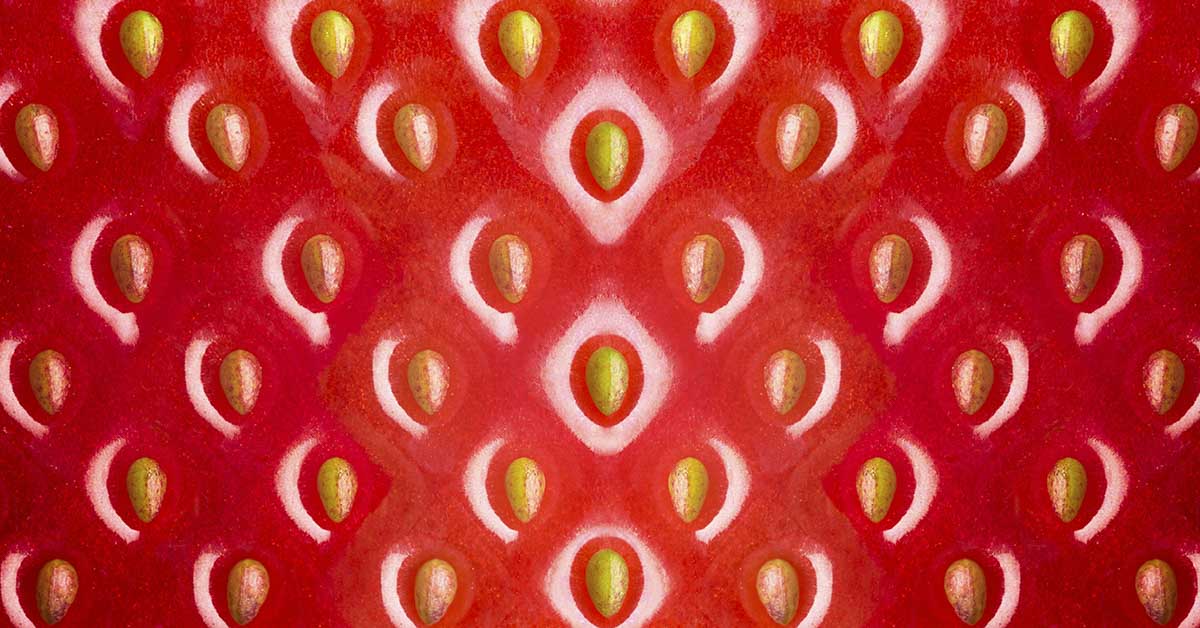Strawberries are undeniably one of nature’s most delightful treats, from captivating us with their vibrant red color to their sweet taste. However, beneath their appealing exterior lies a microscopic world invisible to the naked eye. A close-up examination of strawberries under a microscope unveils a surprising and often unsettling array of insects and microorganisms.
Under the Microscope
A microscopic analysis of strawberries offers a glimpse into an intricate ecosystem thriving on their surface. Trichomes, tiny hairs covering the strawberry’s skin, play a vital role in protecting the fruit from various threats. However, these delicate structures also provide a suitable habitat for numerous organisms, including bacteria, fungi, and insects.1 Researchers have discovered that strawberries can harbor various microscopic life forms, such as mites, thrips, and even nematodes. While the presence of these organisms may be disconcerting, it is important to note that not all of them are harmful.
Of course, if you want to get thoroughly grossed out, feel free to take a look at this viral video showing the absolute horror story of what can be found in and on your delicious strawberry. And while there is no evidence of them being damaging to your health, many of them are considered pests and invasive, so not exactly high praise either way.2
Are you having a good day today?
— QENNY in The QENNYVerse (@AKBrews) March 28, 2023
I'm sorry for ruining it by posting this video of a strawberry under a microscope. pic.twitter.com/xQKSG04OYK
The Importance of Washing Fruit
With this in mind, it brings to the forefront the importance of ensuring what you’re eating (fruit and vegetables especially) is thoroughly washed before entering your body. Many bacteria, counter to the strawberry’s naturally docile inhabitants, are harmful to us and can make us very sick. Here’s a brief rundown on keeping yourself safe:
Removing Pesticide Residues
One of the primary reasons for washing fruits, including strawberries, is to eliminate pesticide residues. Pesticides are commonly used in conventional farming practices to protect crops from pests and diseases. However, these chemical residues can persist on the fruit’s surface and may pose health risks when ingested. Thoroughly washing fruits under running water helps reduce pesticide levels and alleviates potential health concerns associated with their consumption.
Eliminating Harmful Bacteria
In addition to pesticide residues, unwashed strawberries may harbor harmful bacteria, including Salmonella and E. coli, which can cause foodborne illnesses. These bacteria can originate from contaminated water, soil, or human handling during cultivation, harvesting, or packaging. Thoroughly rinsing strawberries can significantly reduce the risk of ingesting these pathogens, safeguarding our health and well-being.
The Dangers of Not Fruit Washing
Foodborne Illnesses
As previously mentioned, neglecting to wash strawberries increases the likelihood of contracting foodborne illnesses. Bacteria and other microorganisms on the fruit’s surface can cause symptoms such as nausea, vomiting, diarrhea, and hospitalization in severe cases. Simply washing strawberries before consumption can significantly reduce the risk of falling ill and protect our digestive health.
Allergies and Sensitivities
Unwashed strawberries may also trigger allergic reactions in susceptible individuals. Pollen and other allergens can settle on the fruit’s surface, leading to itching, swelling, and respiratory distress. Washing strawberries ensures the removal of potential allergens, making them safe for consumption, even for those with allergies or sensitivities.
Cross-Contamination
Another critical aspect of fruit washing is preventing cross-contamination. Unwashed strawberries can transfer microorganisms to other surfaces, such as cutting boards, knives, or other fruits. This can lead to the spread of bacteria and increase the risk of contamination throughout the kitchen. By thoroughly washing strawberries, we minimize the chances of cross-contamination and maintain a hygienic food preparation environment.
In addition to the aforementioned benefits, washing strawberries can also improve their overall quality. Removing dirt, debris, and any pesticide residues can enhance the fruit’s appearance and taste. It’s like giving them a fresh start, free from any unwanted substances that may have accumulated during the growing and harvesting process.
Keeping Things Clean
When it comes to washing strawberries, a few simple steps can make a significant difference:
- Use clean water: Start by thoroughly rinsing the strawberries under clean, running water. This helps remove any loose dirt or particles from the fruit’s surface.
- Gently scrub: For a more thorough cleaning, gently scrub the strawberries with a soft-bristled brush. This can help dislodge any stubborn dirt or debris clinging to the trichomes.
- Avoid excessive soaking: While washing the strawberries adequately is essential, it’s best to avoid excessive soaking. Strawberries are porous fruits, and soaking them for an extended period can lead to water absorption and potential loss of flavor, as well as let any dirt in the water seep back into the fruit.
- Pat dry: After washing, gently pat the strawberries dry with a clean cloth or paper towel. Removing excess moisture can help prolong their shelf life and prevent bacterial growth.
It’s worth noting that washing alone may not eliminate all potential risks associated with strawberries. By incorporating fruit washing into our routine, we minimize potential health risks and promote a culture of food safety. Teaching children and family members about the importance of washing fruits, including strawberries, helps instill healthy habits that can last a lifetime.
In conclusion, a microscopic examination of strawberries reveals a hidden world teeming with insects and microorganisms. While not all of these organisms are harmful, the importance of washing fruits, such as strawberries, cannot be overstated. Washing helps eliminate pesticide residues, harmful bacteria, and potential allergens, reducing the risk of foodborne illnesses and allergies. It also prevents cross-contamination and promotes overall food safety. By taking a few extra minutes to wash our strawberries; we can enjoy their delicious flavor and reap the benefits of a cleaner and safer eating experience.
Keep Reading: Why Are Worms Coming Out of Strawberries in This Viral Video? An Expert Explains
Sources
- https://pubmed.ncbi.nlm.nih.gov/16329966/
- https://www.iflscience.com/video-of-strawberry-under-a-microscope-is-here-to-ruin-your-day-68209
- https://twitter.com/AKBrews/status/1640771321532432385?ref_src=twsrc%5Etfw%7Ctwcamp%5Etweetembed%7Ctwterm%5E1640771321532432385%7Ctwgr%5E5a3f66e331a88ffae96d1051dbff3fe410ac16ca%7Ctwcon%5Es1_&ref_url=http%3A%2F%2Fadmin.iflscience.qa%2Farticles%2Fpage%2F1

